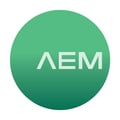KB06 Testing for Ethernet Performance - Knowledge Base TestPro CV100 Article #06 - also applicable to Network Service Assistant
This article describes how to test a link for its Ethernet performance. Every TestPro and Network Service Assistant (NSA) comes with the capability of testing a link for 10Mbps, 100Mbps and 1Gbps Ethernet via the side Ethernet port. For TestPro, if you have the AD-NET-CABLE adapter, you can go further and test to 2.5/5/10Gbps. Every Network Service Assistant by default comes with capability of testing a link for 10Mbps through 10Gbps.
Part 1: Basic testing to 1Gbps (Using the side Ethernet port)
- From the Home screen select Base-T. Note that if a valid device is detected at the far end, it will connect automatically.
- From the Base-T screen, select Autotest. You will see an indication of Autotest In Progress.
- Test results summary will indicate the SNR (Signal-to-Noise Ratio) value, limit and worst-case margin. Note that the limit can be user-defined by going from the Home screen to Project/Edit Test Profile/Limit. The summary will also show wiremap and approximate length. For accurate length measurements, please use a copper certification test (TestPro) or Certi-Lite Qualification+ test (NSA).
- Selecting the Details tab in the test results will display SNR by pair for more in-depth investigation of any marginal or failed results.

Part 2: High speed testing up to 10Gbps (Using the 2.5G/5G/10G/PoE port on the TestPro AD-NET-CABLE adapter or with NSA using the AD-NSA adapter)
- From the Home screen, press the Multi-Gig icon. Note that if a valid device is detected at the far end, it will connect automatically.
- From the Multi-Gig test screen, select Autotest. You will see an indication of Autotest In Progress and observe the test will cycle through 100Mbps, 1Gbps, 2.5Gbps, 5Gbps, 10Gbps.
- Test Results summary screen will display upon completion and will indicate the SNR (Signal-to-Noise Ratio) value, limit and worst-case margin. The summary will also show wiremap and approximate length. For accurate length measurements, a copper Certification test (TestPro) or Certi-Lite test (NSA) should be performed.

Notes:
- From the results summary screen, you can get pair-level details.
- When testing higher speeds via the Multi-Gigabit Ethernet port on the tester, SNR values are displayed for 2.5G/5G/10G. Successful connection is displayed for 100M/1G. For SNR measurements of 1G and below, please refer to the Base-T test.
- If PoE is present during testing via the Multi-Gigabit interface, the Real Power measured under load will be displayed in the PoE tab.
- Whether running these tests via the Multi-Gigabit port or the 1G/100M/10M port on the side of the handset, the SNR test is performed with traffic load to provide a true evaluation of the link performance.

- These tests may be done into an active link with a single TestPro or Network Service Assistant to qualify that active link on the live network. They may also be performed using two TestPro units as Main and Remote to perform the tests on an installed link not yet connected to network equipment.
- Note that a small (<5dB) margin may not guarantee good performance. This is because the cabling at rest is ‘best case’. If the attached devices are transmitting traffic and sourcing PoE, the SNR will decrease on an active circuit. Testing while the network is active provides better diagnostics.
- Test Limits may be edited to test specific link speeds and SNR Limits may be customized to use something other than the IEEE default of 0dB. Select/deselect desired network speeds and enter desired SNR Limit. To get to these settings from the Home screen: Project/Edit Test Profile/Limit. Press Save after making changes.

To download a PDF of this article, click the link below.
KB06 Testing for Ethernet Performance
